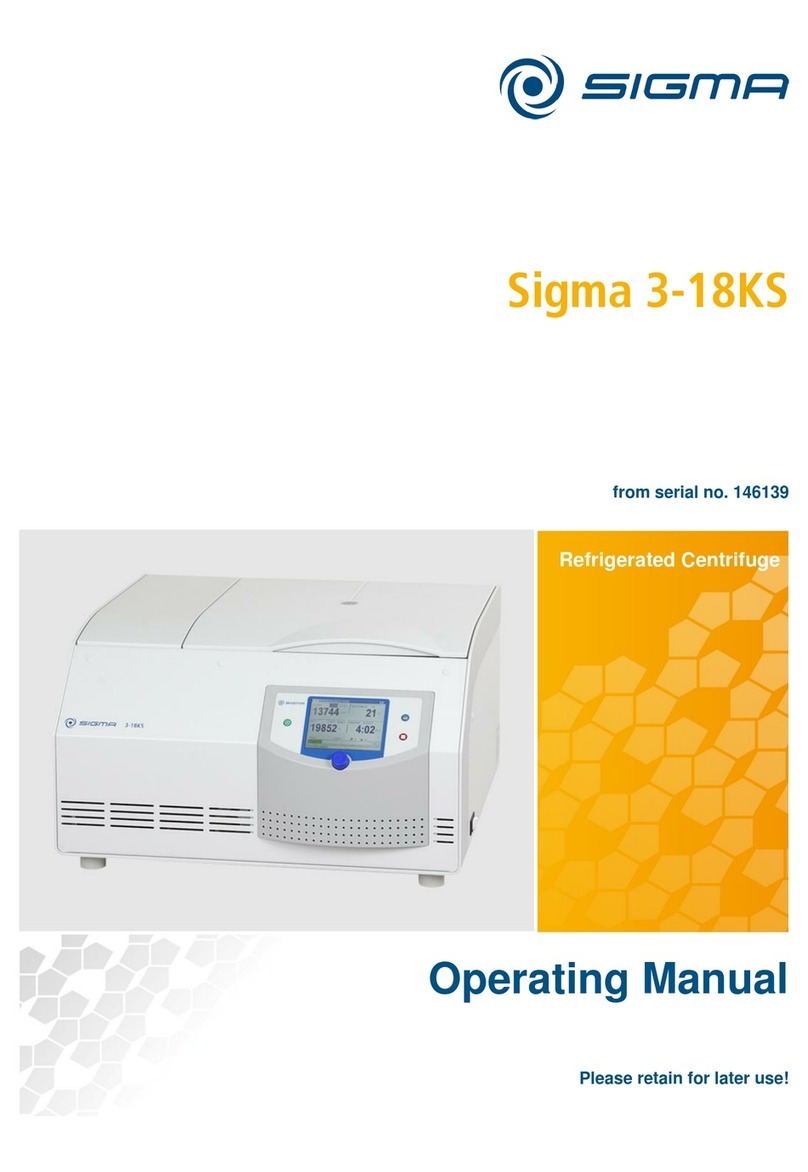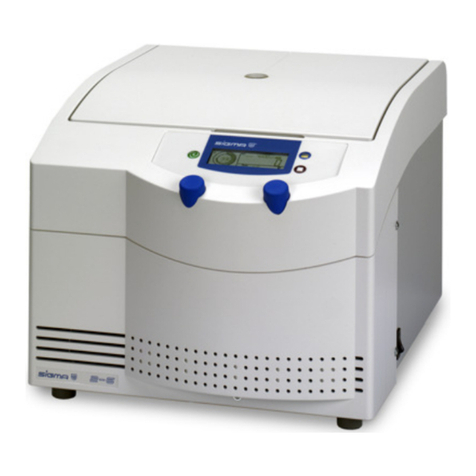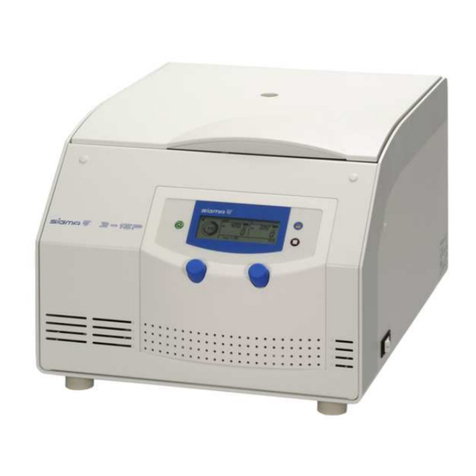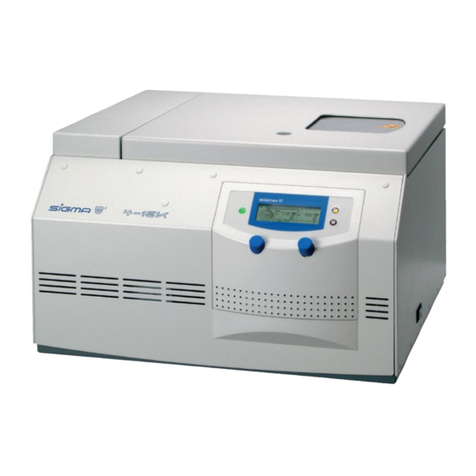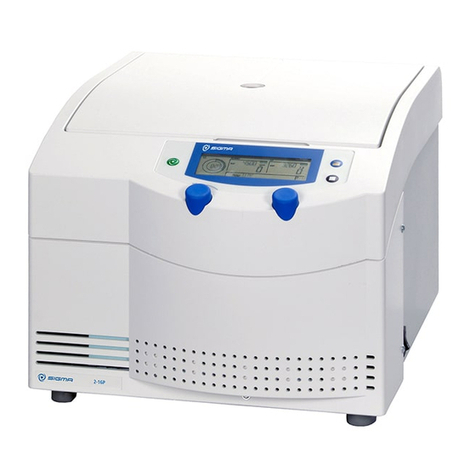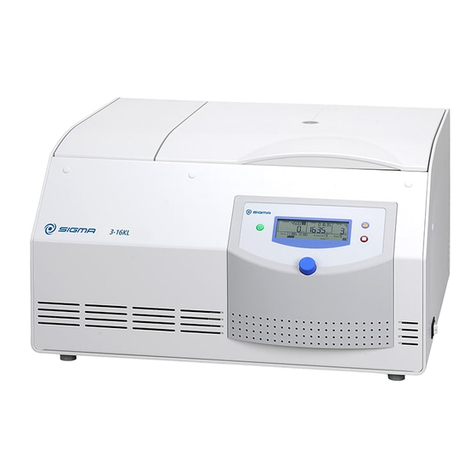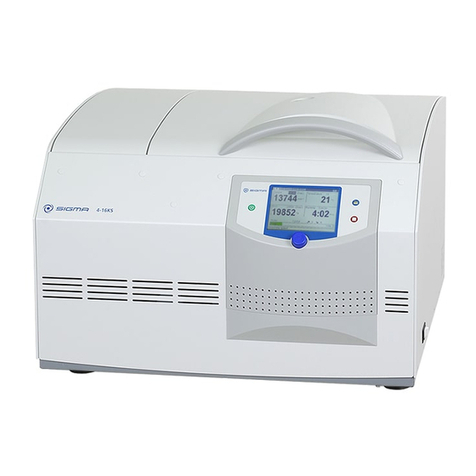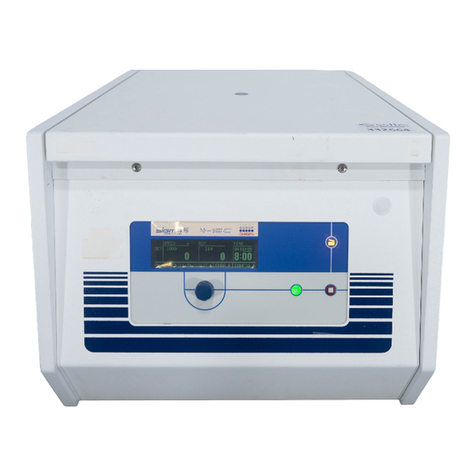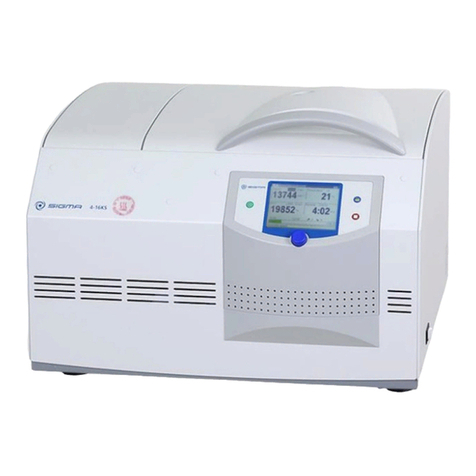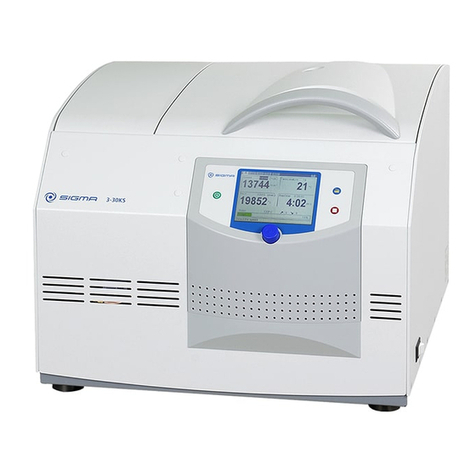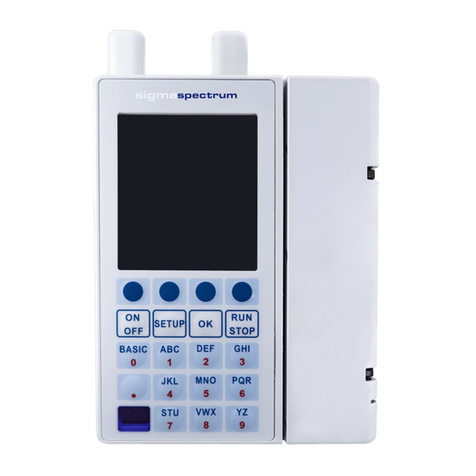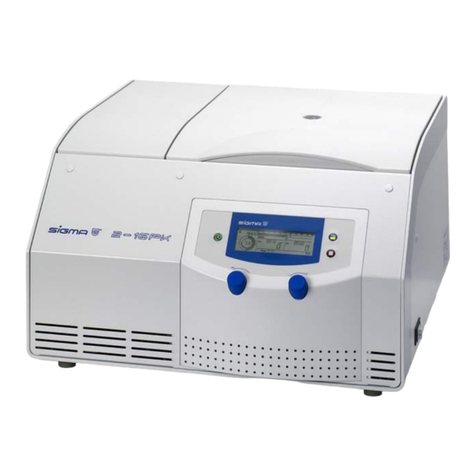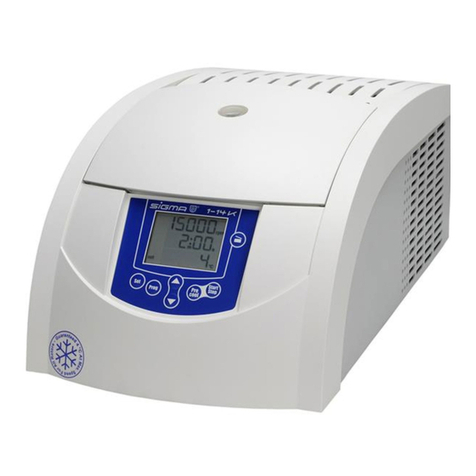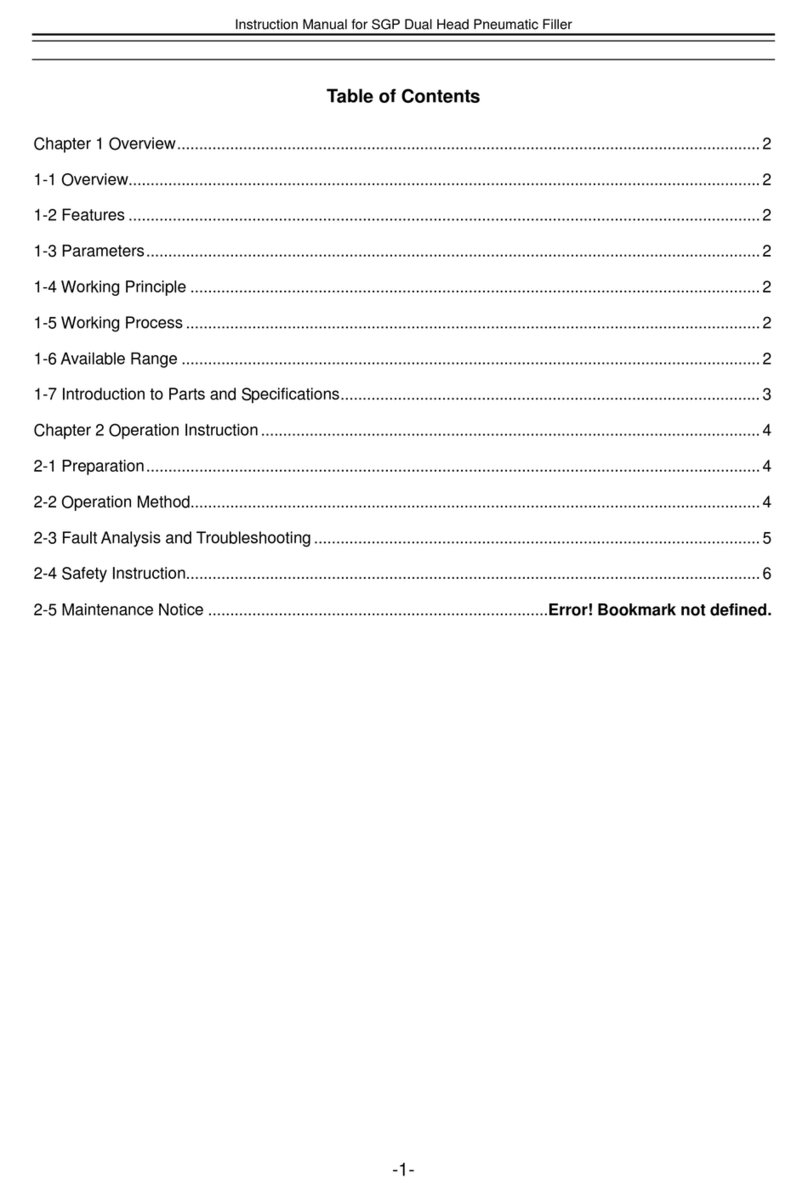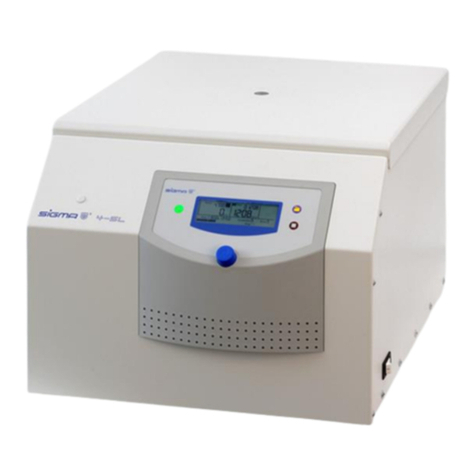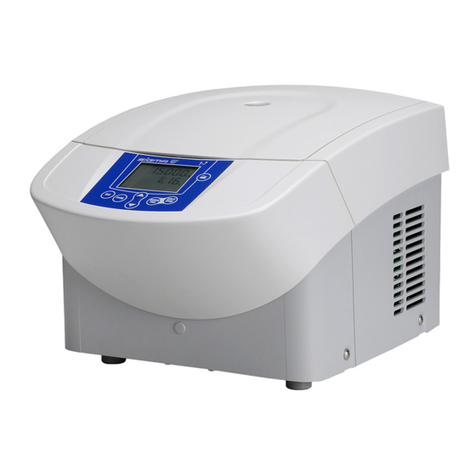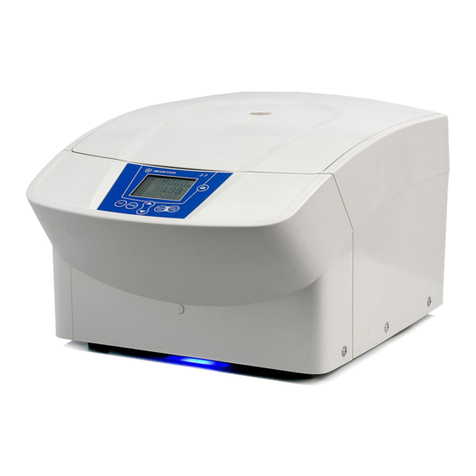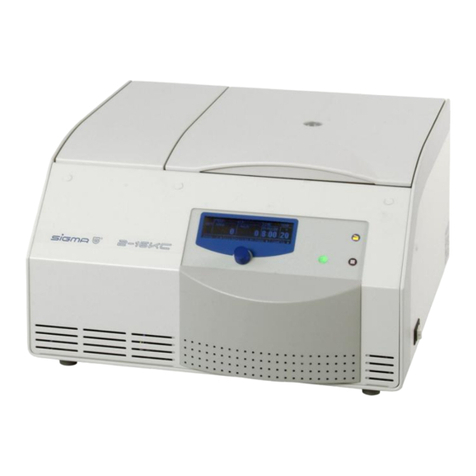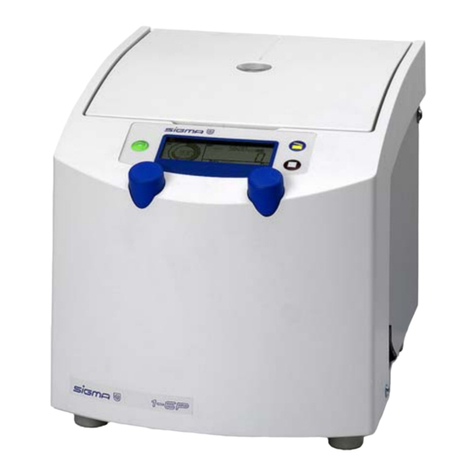
Operating Manual SIGMA 2-16PK page 3 of 77
05/2007
Dear Customer,
Congratulations on your purchase of a SIGMA laboratory centrifuge. You have selected a
device that combines many advantages.
The SIGMA 2-16PK is a universal refrigerated microprocessor-controlled table top centrifuge.
The electronic operation control enables a trouble-free use of the centrifuge. With its quiet 3-
phase maintenance-free drive, operation without any carbon dust pollution is guaranteed.
Your device is equipped with user-friendly options that make the operation and standard
settings easier for you. Built-in error-detecting functions keep the user from entering erroneous
values and they also check the entire operation.
All of the settings are executed via the control panel with a coated surface that protects the
device against moisture and dust. In addition, the interior of the centrifuge is also rather easy
to clean. We offer you a device that combines functional variety along with practical
applications.
Our centrifuges are carefully manufactured according to the highest quality standards, in
which we are certain that your demands will always be met.
We wish you much success in the use of the centrifuge.
SIGMA Laborzentrifugen GmbH
An der Unteren Söse 50 Postfach 17 13
D-37520 Osterode D-37507 Osterode
Phone: +49 (0) 5522/5007-0 – Fax: +49 (0) 5522/500712
Internet : www.sigma-zentrifugen.de
SIGMA Service Phone: +49 (0) 5522/5007-8425
Fax: +49 (0) 5522/5007-9425
© 2007 by SIGMA Laborzentrifugen GmbH
Modifications reserved.






